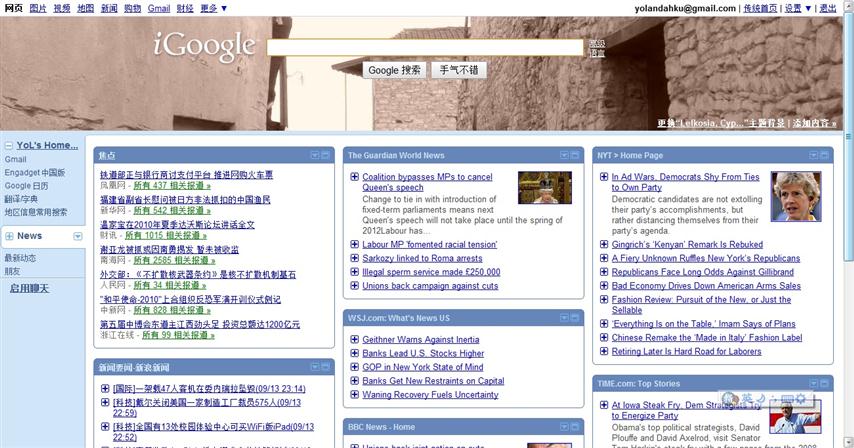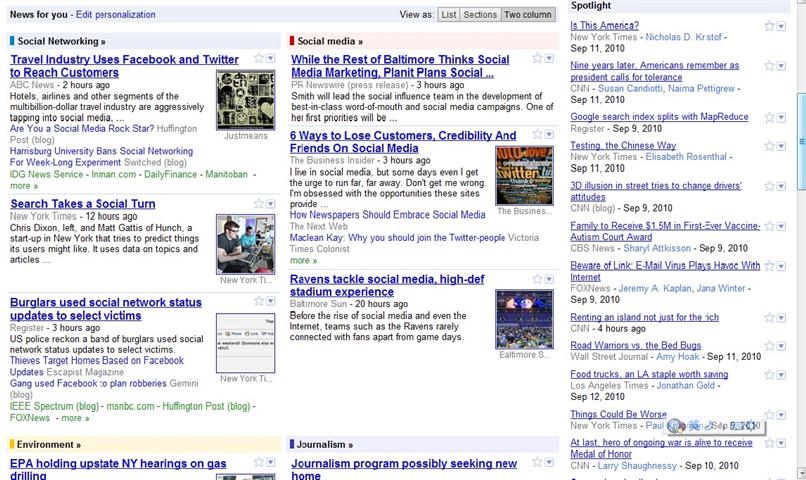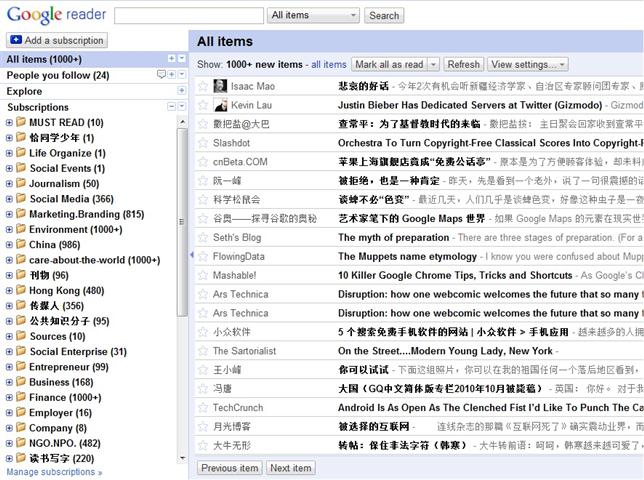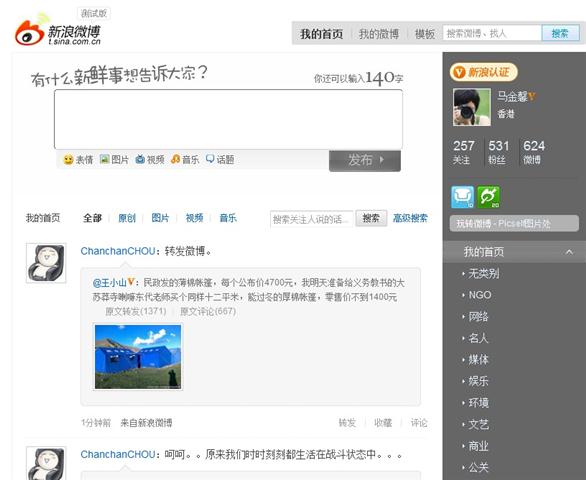When there is just TOO MUCH information, how to get access to high-quality information becomes one critical factor for personal development. I have been experimenting all possible tools for information acquisition, management and sharing. I can’t say that I have found an ideal system – actually still far from it, but my complicated system would somehow reflect the toughness of information age.
My tools for getting incoming information includes: Google Reader; iGoogle; Google News; Twitter; Sina Microblog; Gmail.
OK, I don’t need a reminder for what is going on: Bloglines is shutting down, Google Reader’s market share is decreasing, RSS is dying, blablabla. However, Google Reader remains one of my best tools and I am very loyal to it. I’ll explain later.
Here is a typical hour of me every morning:
First, I spend five minutes on iGoogle, just have a quick look at major news organizations, to see what is going on:
The media I include on iGoogle are: Sina News (China), Zaobao (Singapore), The Guardian, BBC, Reuters, WSJ, NYT, TIME, and Business Week. Unless there is a huge huge news, I usually only look at the headlines.
Then I spend 10 minutes on Google News. It has self-generated top stories, but the great thing is that it has customized “news for you“. I have the following sections: Social Networking, Social Media, Environment, Journalism, Business and World.
The next 30 minutes, I go to Google Reader. I have been using it for over three years and it is just great. Its statistics tell me: “Since March 24, 2007 you have read a total of 38,286 items. From your 840 subscriptions, over the last 30 days you read 955 items,clicked 20 items, starred 210 items, shared 367 items, andemailed 7 items.“
And some other stats: on Google Reader, I have been following 142 people, and 213 people are following me.
I used tags to organize the 800+ subscriptions I have. And I read different tags in different times. Usually in the morning, I only read MUST READ and Journalism, which prepare me for today’s work, just to keep trend of the most recent developments in the digital media field. In the evening, I would clear all items shared by people I follow – this is another Must Read. Those shared items are usually good and worth reading, because they have been filtered by people I trust already. During the week I explore different tags and usually leave the cultural stuff for weekend.
The social function is what I valued the most about Google Reader. I don’t use it for news – never. I know once you use RSS to subscribe news, that would be a disaster: items rapidly grow over 1000+ and you’ll never read it. For people who only has less then 100 contacts on different social network platforms, it will not make much different which to get information from. But for someone has over 1000 contacts on various platforms, I would only choose the sources that I trust the most. So here comes the difference between G-Reader and Twitter: Reader’s following function is based on Gmail at the very beginning, which means all the people you follow are those you do have contacted and you do know them well. While for Twitter, you follow people you would never know in real world, such as Justin Bieber or Barack Obama.
So yes I do use Twitter and its Chinese version Sina Microblog. They are good as long as you have a good app to organize it. Otherwise the coming information would be just chaotic and flooding. I don’t follow more than 300 users and I used lists to have them separated. For Twitter, I would recommend TweetDeck. For sina, the web version is already very user-friendly. That is where my last 15 minutes go.
To summarize, my tools serve different functions: iGoogle for general news, Google News for personalized news, Google Reader for non-news information that has longer shelf-life, and microblog serves for watching how people outside my reach are doing, reading, and interacting. I wish to keep it more simple and your comments are welcomed.
(This post is a response to Oliver Ding’s Post about information management and Reg Chua’s ongoing discussion about how people consume news and information)




no wonder the number of your shared items in google reader..
um~~~one question, how about your douban? It seems that it is not included in this article.
@Chou, douban is not for getting information, but for socializing, and keep a personal history of books/music. I’ll mention it in another article in this series.
Great post, though I think the amount of content you consume everyday is still very overwhelming. Instead of searching for the right mix of tools to help you organise data, I go with a the “rule of 5” to prioritise what I must (and must not) read. Worked like a charm.
I would like to create one as you do.
@Razlan, Yes it is overwhelming and I still need to simplify it. Also realized that my current theme is not good enough for long article with pics. need to solve the problem.
Decide on five categories you are MOST interested in, and then choose the BEST five feeds in those categories. At one point of time, you’ll have only 25 feeds to dig through. The best 25, mind you.
P.S.: Yours is one of my 25.
Haha, happy that I am one of the 25 (wondering what are the others.. haha). Nice principle. I’ll try!
Great overview. I’ve always looked to you for techniques on info gathering =] Will go ahead and refine my own feeds based on ur experiences
非常厉害!
Nini
Thanks Nini for comment! But I guess my experience is very text-oriented, TV person should have some other channels too!
I’ve recently started a blog, the information you provide on this site has helped me tremendously. Thank you for all of your time & work.